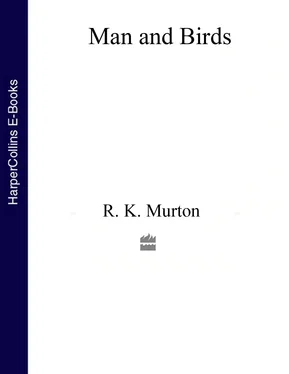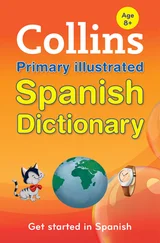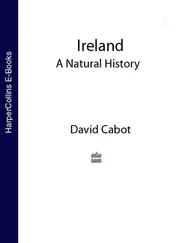The fault is great in man or woman,
Who steals a goose from off a common,
But what can plead that man’s excuse,
Who steals a common from a goose.
(The Tickler Magazine, 1 February 1821.)
John Clare in ‘The Village Minstrel’ sums up some of the changes that must have grieved the ornithologist:
There once were days, the woodman knows it well,
Where shades e’en echoed with the singing thrush;
There once were hours, the ploughman’s tale can tell,
When morning’s beauty wore its earliest blush,
How woodlarks carol’d from each stumpy bush;
Lubin himself has mark’d the soar and sing:
The thorns are gone, the wood-lark’s song is hush’d,
Spring more resembles winter now than spring,
The shades are banish’d all – the birds have too to wing.
The population of England and Wales slowly increased from about 4 million in 1603 to 5½ million in 1714, held in check by a high death-rate. The explosion occurred with the Industrial Revolution, from 9 million in 1801 to 18 million in 1851. For a while the rate of increase was held down by a high urban mortality, through epidemics of cholera and other diseases of overcrowding. Improved hygiene in the latter half of the nineteenth century removed this check and the rate of natural increase was only halted in the 1920s (it fell from 10.4 in 1921 to 3.9 in 1931) as a direct consequence of contraception but by now there were 40 million people in England and Wales, reaching 52 million in 1959.
These demographic statistics serve two functions here. They illustrate for the human population some of the principles to be discussed in the next chapter in relation to birds. In particular, although the birth-rate was high in the seventeenth century (as it was earlier) the population was relatively stable due to a high reciprocal death-rate. Population size increased in response to improved environmental resources during the Industrial and Agrarian Revolutions. The data also emphasise the pressures that man had come to inflict on the land and, by inference, on its wild life. In the nineteenth century, bustard, bittern, avocet, ruff, black tern and roseate tern vanished, and large birds of prey like the goshawk became rare. Loss or fragmentation of their habitat was not the sole reason because some have since returned, and man’s greed must be blamed to a large extent: there were those to whom the rarity of a bird made its capture imperative.
Those people living near large colonies of nesting birds have for long been able to harvest them for food. Fisher and Peterson have related how ancient sea-fowling communities in Greenland, Iceland, the Faroes and St Kilda had evolved a rational level of exploitation of the seabird colonies of gannets, fulmars and auks, ensuring that sufficient eggs or young birds were left to prevent declines in the future harvest. By trial and error they have found that about half the auks’ eggs can be collected, as these species lay repeats, but fulmars do not and are better left alone to hatch their young. In a valuable review dealing with the exploitation of the eggs of wild birds throughout the world, Cott has emphasised how the factors governing the utilisation of wild birds’ eggs are accessibility, palatability and availability. The first two are rarely limiting, but the size and concentration of the potential crop is important. Cott found that with the exception of the eggs of certain boobies, cormorants and pelicans, which are rank and fishy to a cultivated palate, there is a broad correlation between palatability, size and colonial grouping. For reasons which will become clear in Chapter 2, most adult birds and their eggs can withstand considerable cropping without the replacement potential being adversely affected, and, as with all wild food resources, the object is to achieve the highest annual cropping rate without detriment to the maintenance of a sustained yield. In the late nineteenth century this level was exceeded in species after species, with the same thoughtless greed with which the Victorians exploited other natural resources and the colonies. In 1884, 130,000 guillemot eggs were collected from Bempton (at the time, tons of eggs were sent to Leeds where the albumen was used in the manufacture of patent leather); in 1840, 44,000 black-headed gull eggs were taken from Scoulton Mere, and 89,600 puffin’s eggs were taken from St Kilda in 1876.
The adornment of their ladies with feathers was another excuse for slaughtering wild birds. Quite apart from a scandalous trade in ostrich and egret plumes, a host of seabirds were massacred within the British Isles. Kittiwake wings were in demand for the millinery trade and a large industry existed at Clovelly in Devon and elsewhere; 9,000 are supposed to have been killed on Lundy in one fortnight. Coulson (1963) gives many other examples and relates how the species was also shot for sport and food, resulting in a decline from which it did not recover until the early decades of the twentieth century.
It is against the background of serious over-exploitation that the increase of a very wide range of seabirds in the twentieth century must be viewed and several examples will appear in later chapters – the great crested grebe (see here), kittiwake (see here), oystercatcher (see here). The eider perhaps should also be mentioned. One hundred years ago it was confined to the islands on the west coast of Scotland, and at one mainland site in East Lothian and in the Farne Islands. From this very restricted range it had spread to a wider range in coastal Scotland and to the Shetland and Orkney Islands by about 1890, and it became common by 1922. The bird has always been subject to intensive cropping both for its eggs and its down. While its down could be collected from the nest after the eggs have hatched, in the majority of cases the eggs and down have been lifted together, repeat layings often being harvested as well. On the Farne Islands the eider has always received a measure of protection owing to its association with St Cuthbert, but as long ago as 1397 the Bursar’s roll of the Monastery of Durham, which contained the Shrine of Cuthbert, mentions the use of eider-down for stuffing and cushions. Several colonies in Scotland and the Farne Islands were reduced during the 1939–45 war when the birds were collected for food, but these have recovered. In addition, Tavener has documented a marked post-war rise in numbers of non-breeders round the British coast, associated with an increase in the Dutch population, and also increases in other parts of Europe and North America, all apparently resulting from protection. There has, however, been little southward extension of the bird’s breeding range in Britain in the past 20 years. More recent studies by Dr H. Milne on the Sands of Forvie Nature Reserve, Aberdeenshire, showed that local numbers increased from about 3,000 birds in 1961–3 to around 5,000 during 1964–7 and that most of this increase resulted from a particularly good breeding season in 1963. Thus home-production rather than immigration apparently accounts for eider increases in Britain at least.
The excesses of the late nineteenth century roused the passions of a few men, and probably more women of suffragette spirit, and their campaigning led to the first Seabirds Preservation Act of 1869, hopelessly inadequate in its conception but a step in the right direction, to be followed by the Protection Acts of 1880–96. This same climate of moral indignation also led to the formation of the Society (later Royal Society) for the Protection of Birds in 1891. The Society went from strength to strength in the vanguard of the more enlightened attitude to birds characteristic of the start of the present century, doing immense good for ornithology, albeit sometimes for the wrong reasons. Today, the R.S.P.B. stands in the forefront of a scientific and imaginative approach to bird conservation.
Читать дальше












